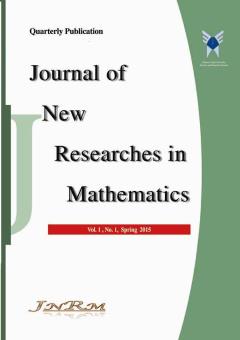Improving production possibility set in data envelopment analysis using confidence interval values
Subject Areas : تحقیق در عملیاتPooya Nasrollahian 1 , Alireza Amirteimoori 2 , Sohrab Kordrostami 3 * , Mohsen Vaez-Ghasemi 4
1 - Department of Applied Mathematics, Rasht Branch, Islamic Azad University, Rasht, Iran
2 - Department of Applied Mathematics, Rasht Branch, Islamic Azad University, Rasht, Iran
3 - Department of Mathematics, Lahijan Branch, Islamic Azad University, Lahijan, Iran
4 - Department of Applied Mathematics, Rasht Branch, Islamic Azad University, Rasht, Iran.
Keywords: تحلیل پوششی دادهها, بازه اطمینان, رتبهبندی, مجموعه امکان تولید,
Abstract :
Considering the production possibility set ( P P S ) a n d using it to rank decision making units ( D M U s ) is a common method in data envelopment analysis ( D E A ) . But due to this fact that the P P S is an estimation of the actual technology set, it often takes a long distance from it, causing ranking problems. In this paper, it is tried to improve the frontier of revenue p o s s i b i l i t y s e t by adding v i r t u a l D M U s using the confidence interval i n o r d e r to provide a better ranking than the c o n v e ntional ranking . F i n a l l y, an example with real data is provided to clarify the content.
[1] Amirteimoori, A., Kordrostami, S., Nasrollahian, P. A Method for Solving Super-Efficiency Infeasibility by Adding virtual DMUs with Mean Values. Iranian Journal of Management Studies, 10(4), 905-916 (2017)
[2] Andersen, P., Petersen, N. A procedure for ranking efficient units in data envelopment analysis. Management Science, 39(10) , 1261-1264 (1993)
[3] Banker, R. D., Charnes, A., Cooper, W. W. Some models for estimating technical and scale inefficiencies in data envelopment analysis. Management Science, 30(9), 1078-1092 (1984)
[4] Charnes, A., Cooper, W., Rhodes, E. Measuring the efficiency of decision-making units. European Journal of Operational Research, 3(4), 339 (1979)
[5] Charnes, A., Haag, S., Jaska, P., Semple, J. Sensitivity of efficiency classifications in the additive model of data envelopment analysis. International Journal of Systems Science, 23(5), 789-798 (1992)
[6] Charnes, A., Cooper, WW., Golany, B., Seiford, LM., Stutz, J. Foundations of Data Envelopment Analysis for Pareto-Koopmans Efficient Empirical Production Functions. Journal of Econometrics, 30(1-2), 91-107 (1985)
[7] Chen, Y. Ranking efficient units in DEA. OMEGA, 32, 213-219 (2004)
[8] Mehrabian S., Alirezaee M. R., Jahanshahloo G. R. A complete efficiency ranking of decision making units in data envelopment analysis. Computer Optimization Apply, 14, 261-266 (1999)
[9] Seiford L. M., Thrall R. M. Recent developments in DEA: The mathematical programming approach to frontier analysis. Journal of Econometrics, 46, 7-38 (1990)
[10] Seiford, L. M., Zhu, J. Stability regions for maintaining efficiency in data envelopment analysis. European Journal of Operational Research, 108(1), 127-139 (1998)
[11] Seiford, L. M., Zhu, J. Infeasibility of super-efficiency data envelopment analysis models. INFOR: Information Systems and Operational Research, 37(2), 174-187 (1999)
[12] Sexton, T. R., Silkman, R. H. and Hogan, A. J. Data envelopment analysis: Critique and extensions. New Directions for Program Evaluation, 1986: 73-105 (1986)
[13] Thrall R. M. Duality, classification and slack in data envelopment analysis. The Annals of Operational Research, 66, 109-138 (1996)
[14] Tone K. Variations on the theme of slacks-based measure of efficiency in DEA, European Journal of Operational Research200, 901-907 (2010)
[15] Tone K, Tsutsui M. Dynamic DEA with network structure: A slacks-based measure approach, Omega 42, 124-131 (2014)

